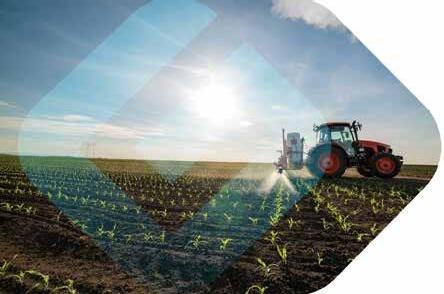
6 minute read
The Future of Agriculture in the San Joaquin Valley
from February 2023
His light on earth has dimmed, but heaven is brighter as he has joined Florence, the true love of his life.
developing new water supplies. Local water users must also avoid significant undesirable effects of groundwater use along the way.
Advertisement
So long to our Dad, coach, neighbor and everyone’s friend. He will be deeply and painfully missed, yet celebrated, honored and never forgotten.
SGMA was prompted by the chronic overpumping of groundwater, which has reduced groundwater reserves, dried up wells, and damaged infrastructure. These issues will worsen, and become increasingly costly for farmers and valley communities, if the region fails to achieve sustainability.
In lieu of flowers, the family requests that donations may be made to Grace Nursing Home in Livingston or to the Joe F. Alvernaz Memorial Fund to benefit youth baseball in Livingston.
Achieving groundwater sustainability will be the single biggest driver reducing water supply in the valley. But climate change—which will affect precipitation patterns and increase crop water demands—will further constrain water supplies. So will additional water dedicated to the environment, especially in a few specific basins.
Sweet Potato Joe was the Farm Bureau President from 1983-1986 and hired long-time staff member Lorraine Passadori when she showed up in her clown costume for the interview. Agriculture lost a strong advocate that will truly be missed. We will continue to keep his family in our thoughts and prayers.
See 'San Joaquin Valley' Page 14
San Joaquin Valley
continued from page 13
We estimate that by 2040, the combined impacts of SGMA, climate change, and environmental regulations could cause a 20 percent reduction in water availability for valley agriculture, or around 3.2 maf (panel a in the first figure). Water constraints will lead to a reduction in irrigated lands, and in overdrafted basins, areas with less access to surface supplies will face a much higher risk of fallowing (panel b). In the worstcase scenario, without developing new supplies or engaging in water trading activities, the transition to sustainability under climate change and increased environmental flows will require the fallowing of nearly 900,000 acres with respect to current conditions. In some areas, more than 50 percent of lands may need to be fallowed (panel c).
These estimates are average annual values for scenarios in 2040—but it is important to note that there is no “average” in California. The San Joaquin Valley will continue to face droughts, in addition to the water reductions we describe above, and additional seasonal fallowing will be needed in some years to cope with the intrinsic variability of the state’s Mediterranean climate. Demand and supply strategies can
Soften The Impacts Of Water Stress
Growing water scarcity will cause substantial land fallowing and losses of agricultural GDP and jobs by 2040. In past work, we found that two approaches could significantly mitigate the socioeconomic losses: increasing flexibility through water trading and expanding water supplies. Trading does not substantially reduce fallowing because it does not increase water availability, but it does reduce economic impacts by moving water to crops and locations where cutbacks would be most costly for growers and the regional economy. New cost-effective supply investments can also provide economic benefits, while reducing the need to fallow land.
Here we revisit our earlier analysis, exploring a range of scenarios with more recent, granular data (see box). Below we present the main conclusions based on the water, land, and socioeconomic results shown in the second figure.
Inflexible water management is a costly way to cope with growing water scarcity. In the most constrained scenario—when cuts from SGMA, climate change, and increased environmental regulations are all included and no trading is allowed— GDP would decline by more than $4.5 billion, employment by nearly 50,000 jobs, and regional economic activity by 2.3 percent.
Water trading would significantly reduce regional economic losses. Localized trading of both surface and groundwater can reduce the regional costs of adjustment roughly by a third (33% for GDP and 30% for jobs). More flexibility further reduces costs: with basin-wide trading and valley-wide surface trading, GDP losses are 42–50 percent lower, and job losses 37–44 percent lower, than with inflexible water management. Small reductions in total land fallowing would occur as farmers switch away from some thirstier feed crops towards perennial nuts and fruits. New supplies would further mitigate losses. Even with relatively high costs for new water, expansion of supplies would further reduce GDP losses, while also saving jobs. At $500/ af, GDP losses would decline by 58–61 percent relative to the baseline for the +0.5 and +1 maf scenarios respectively (shown in the second figure), and job losses would decline by 57–69 percent. At the heftier price of $1,000/af, the GDP benefits of a +0.5 maf expansion would still be greater than a future with flexible trading and no new supplies, and roughly equal for a +1 maf expansion. But perhaps the most noteworthy effect of new supplies is on farmed acreage: expanding supplies would reduce fallowing by 225,000 and 395,000 acres
(26 and 45%) for the two scenarios considered.
Productivity growth could raise farm output above today’s levels. Continued advances in productivity will significantly soften the impacts of water supply cuts facing the valley: with just half the yield growth of the past 40 years, roughly half of the transition cost could be offset by 2040 even without new supplies or water trading. In the scenario shown in the second figure—which combines productivity growth, flexible trading, and 1 maf of new supplies—regional GDP and jobs actually increase (+1%) relative to current levels despite 1.25 maf less irrigation water.
Considering potential tradeoffs of different management strategies
Although water trading and new supplies can generate broad regional benefits, it is also important to consider the tradeoffs they may entail.

Trading and new water supply projects should avoid significant harm to water users and ecosystems. Trading needs to be done in ways that avoid significant impacts to other water users and the environment. Such safeguards are already in place for surface water trading—and it will be crucial to incorporate them as new groundwater markets develop. For instance, trading should not adversely affect small community drinking water wells. Providing small communities with adequate groundwater allocations— caps on what each user may pump—is another way to ensure their supplies. It also will be important to develop new supplies in ways that mitigate or avoid significant adverse impacts on others.
Trading may adversely affect some agricultural industries. Trading would shift water away from some feed crops (especially alfalfa and irrigated pasture) toward specialty crops—accelerating a process that has been underway for some time. This will raise costs for dairy, beef, and their related processing industries, which will have to buy these inputs from elsewhere or find suitable substitutes. Although these adverse impacts are overshadowed by the larger benefits of water trading, transitional support for affected communities may be warranted.
The valley will still need to manage large increases in fallowed land. Trading reduces the socioeconomic costs of having less water, but barely changes fallowed acreage. Even with an optimistic scenario for new supplies, the valley is looking at close to half a million acres coming out of irrigated production. Haphazard land fallowing could increase dust and air quality problems, exacerbate the spread of weeds and pests, and degrade soils. It will be essential to put these lands to alternative uses that avoid these problems and generate economic and environmental benefits.
Editor's Note: Please visit www.ppic. org/publication/policy-brief-the-futureof-agriculture-in-the-san-joaquin-valley/ to view figures mentioned in article.
By: California Farm Bureau
February 10, 2023
Agricultural Employment Policy
On the last day allowed under state state laws governing regulatory processes for the agency to take action, the Department of Finance on February 3 approved the COVID-19 Non-Emergency Standard, making it immediately effective. It will remain in effect until February 3, 2025. The Non-Emergency Standard is very similar to prior Emergency Temporary Standard iterations except that it does not require employers to furnish exclusion pay (maintenance of pay, benefits and seniority for employees the employer must exclude from the workplace because they may pose a COVID-19 infection hazard).
Air Quality
CA Farm Bureau would like to caution our members about an effort in the San Joaquin Valley to place air quality monitors on, or near, agricultural facilities. A local group out of UC Merced called the San Joaquin Valley Center for Community Air Assessment and Injustice Reduction is attempting to gather air quality data from Stockton to Fresno. Members of the group are approaching producers and asking them to place these air monitors on their operations. The group claims that these monitors will; 1) Understand air quality in your location and the potential impacts on public health, 2) Develop strategies to improve air quality, and 3) Share research results with stakeholders. As CAFB has not been included on this program’s goals or contacted by this group – it is unlikely the data will be shared with us, a stakeholder, and be depicted accurately. Other farming organizations share similar concerns and have pointed out that these monitors do not meet federal EPA guidelines. Farm Bureau would like to emphasize that you are in no way obligated to place one on your property. An example of the letter that is being presented for the monitor’s placement is here https://www.cfbf.com/ ag-advocacy/all-issues/sjv-air-pollution.
Climate Change
SB 253 by Senator Wiener would require the State Air Resources Board, on or before January 1, 2025, to develop and adopt regulations requiring United States partnerships, corporations, limited liability companies, and other business entities with total annual revenues in excess of $1,000,000,000 and that do business in California, defined as






